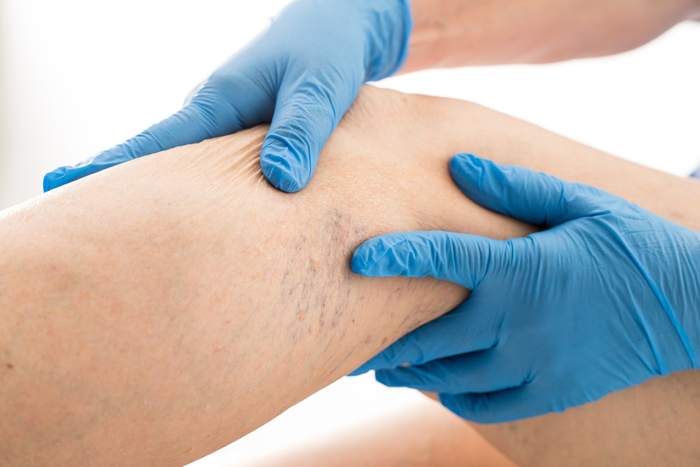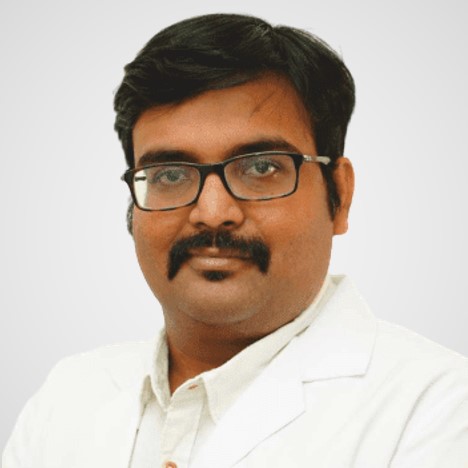Venous Insufficiency Treatment in Kondapur, Hyderabad
The heart pumps the oxygen-rich blood through a system of blood vessels that include the veins and the arteries called the circulatory system. These blood vessels carry the blood throughout the body to every part. Arteries carry the blood away from the heart to the different parts of the body.
Veins carry the deoxygenated blood from the different parts of the body to the heart. These are thin-walled structures with hollow tubes with flaps called valves. When the muscle contracts, the veins open that allows the blood to flow through them. The closing of the valves ensures whether the blood flows in one direction. However, when the valves of the veins become damaged, it can cause venous disease.

What Are the Types of Venous Diseases?
Venous diseases are quite common and they are;
- Varicose Veins: Twisted and enlarged veins that are commonly seen in the lower legs are called Varicose veins. They are the result of veins that do not function properly or weaken the walls of the blood vessels. Mostly seen in the legs, they also appear in the anus and are called haemorrhoids.
- Blood Clots: The formation of the clumps of blood in the different parts of the body that has changed from the liquid to a semi-solid state is known as blood clots. They can be dangerous if they begin to dissolve on their own.
- Chronic Venous Insufficiency: This occurs when the valves in the veins do not function well and do not allow the blood to flow towards the heart. This can cause the collection or pooling of blood. It also causes leg swelling, discolouration of the skin, and increased pigmentation.
- Superficial venous thrombosis or phlebitis: Inflammation of the veins that causes blood clots close to the surface of the skin is called phlebitis. Usually, these do not travel towards the lungs, however, they cause pain and swelling.
- Deep vein thrombosis: Deep vein thrombosis is a blood clot that develops in the deep veins. This is a life-threatening condition as the blood clots can break free and travel in the bloodstream of the body that becomes lodged in the blood vessels.
What Are the Symptoms of Venous Diseases?
The symptoms of venous diseases depend on the type of the disorder. However, the most common signs include;
- Burning or itchy skin
- Discolouration of the skin
- Increased pigmentation
- Swelling or inflammation of the veins
- Fatigue
- Increased pressure
What are the Causes of Venous Diseases?
The causes of venous diseases vary but involve the following:
- Immobility due to stagnation of blood flow
- Blood vessel injury caused by accident, trauma, intravenous catheter, needles, or infections
- The conditions that cause the blood to coagulate or form clots
- Pregnancy and varicose veins increase the risk of superficial thrombophlebitis
- Different cancers are associated with deep vein thrombosis
When To See a Doctor?
It is recommended to see a doctor in the following cases
- Unexplained swelling veins
- Pain
- Swelling in the arm or legs
- Fatigue
- Itchiness and redness
- Discolouration of the skin
Request an appointment at Apollo Spectra, Kondapur
Call 1860-500-2244 to book an appointment.
What are the Treatment Options for Venous Diseases?
Depending on the type of disorder and the severity of the disease, the following treatments are available;
- Elevating the feet about two to four inches above the bed while resting helps in circulation.
- Avoid scratching the varicose veins while they are itching. It results in ulcers and bleeding.
- Compression stockings or socks are used to decrease the pressure on the veins and the swelling. This ensures a steady flow of blood to the heart.
- Sclerotherapy is a procedure that is used to close the veins by injecting a solutions
- Angioplasty is a procedure that is done to open the blocked or narrowed vein. It is also called stenting and is performed at Apollo Kondapur.
- Vein litigation and stripping is a procedure where the damaged veins are tied and removed.
- The use of clot-dissolving agents resolves the condition
Venous diseases are usually harmless and do not pose any health risk. However, if left untreated, it can be life-treating. Therefore, always seek medical intervention if you notice any of the symptoms.
Exercising and walking is an effective treatment for venous insufficiency. It increases the pumping of the heart. The more blood the heart pumps, the more force pushes the blood up and out of the legs.
Natural veins do not cure any type of venous disease. However, it can reduce the risk of complications. The following can be done;
- Exercising
- Keeping the legs elevated
- Using compression stockings
- Changes in the diet
- Eating apples and citrus fruits
Once the valves in the veins are damaged, they cannot completely heal on their own. However, the minorly damaged veins can heal with the help of compression treatments.
Symptoms
Our Doctors
DR. SANJEEV RAO K
MBBS,DRNB (Vascular)...
| Experience | : | 13 Yeras Experience |
|---|---|---|
| Speciality | : | Vascular Surgery... | Location | : | Kondapur |
| Timings | : | Mon- Sat: 5:00 PM to... |
Our Top Specialities
NOTICE BOARD
CONTACT US
CONTACT US
 Book Appointment
Book Appointment



.svg)
.svg)
.svg)
.svg)








